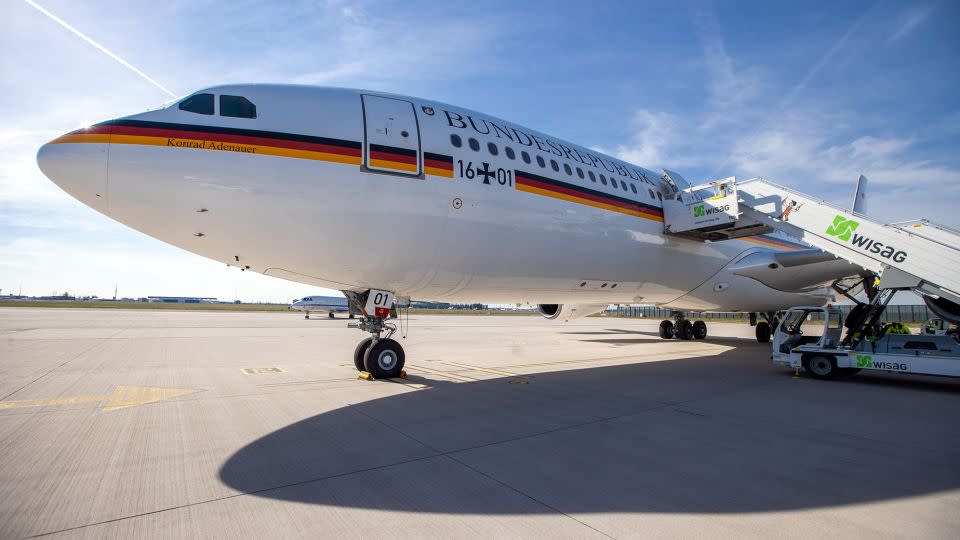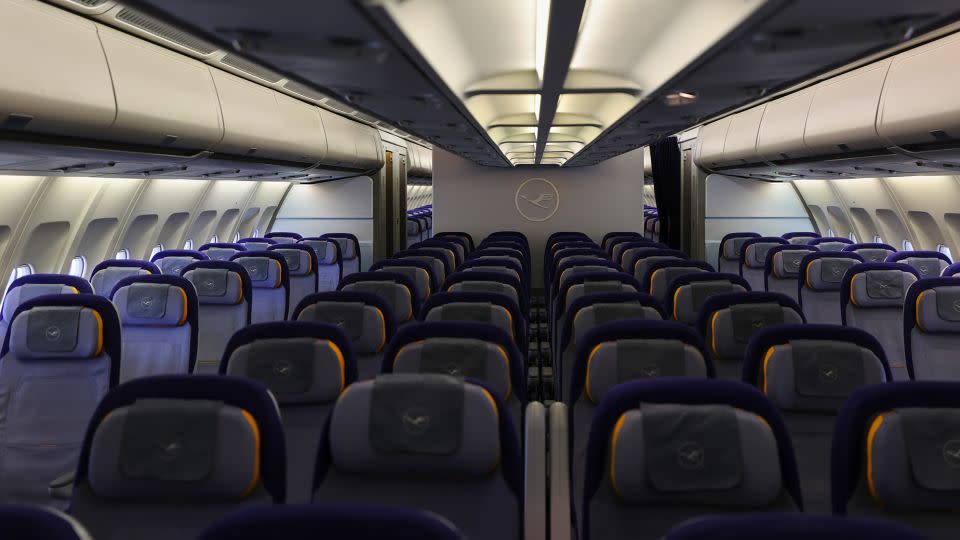While the A380 superjumbo is enjoying a steady resurgence after having been on the brink of retirement during the pandemic, its older sibling – another four-engined aircraft from Airbus – seems dangerously close to being grounded for good.
The A340 was introduced 30 years ago with Lufthansa and Air France, but only 380 have been produced since, the last in 2012. By comparison, Airbus has already made 565 of its successor, the A350, since its introduction in 2015.
Despite the lackluster commercial response, Airbus had high hopes for the A340, which was meant to replace aging Boeing 747s and DC-10s, and was touted as having an unbeatable range.
Just after entering commercial service, in 1993, an A340 set records by flying from the Paris Air Show to Auckland, in New Zealand, and then back after a five-hour layover, totaling over 42 hours in the air. It was the first-ever nonstop flight between Europe and New Zealand and the longest-ever nonstop flight by an airliner.
In its heyday, the plane was used to operate the longest nonstop scheduled flight in the world, and was for a while the aircraft of choice for heads of state around the world due to its range and size.
But its main characteristic – the four engines – soon became a drag as fuel costs started rising and twin-engine jets began offering the same performance with lower operating costs.
By the early 2000s, the A340’s main competitor — the twin-engined Boeing 777 — was outselling it 10 to one. It had even taken away the longest flight record, with a nonstop journey from Seattle to Kuala Lumpur in 1997.
“The A340 disappeared essentially because twinjets could fulfill its mission more efficiently,” says Gary Crichlow, an aviation analyst at consulting firm AviationValues.
“There’s a reason complex organisms evolved to have no more than two of any large, energy-guzzling organ: because when you can’t get away with one, two offers the best bang for the buck. Three or more is overkill.”
Two is better than four

As of February 2024 there were just 64 A340s in service with 17 airlines globally, according to data provided to CNN by aviation analytics firm Cirium.
That’s about half as many as were in service before the pandemic, in early 2019. Only Lufthansa is operating more than 10, with many leading airlines having abandoned the type completely, like Air France, Iberia, Singapore Airlines and Virgin Atlantic, all of which used to operate substantial fleets.
A worrying sign of the A340’s imminent demise is that there are currently no airlines operating the A340-500 variant, which Airbus introduced in 2003 as the world’s longest-range commercial airliner.
Between 2004 and 2013, the -500 variant was used by Singapore Airlines to operate the world’s longest flight, from Newark to Singapore. “The route was discontinued because Singapore Airlines couldn’t generate enough revenue to offset the cost, particularly with fuel,” says Crichlow.
One of the main factors driving four-engine jets to extinction is that newer and more reliable twin-engined jets, like the 787 and the A350, have progressively obtained better safety ratings that allowed them to fly for longer in case of loss of power from one of the two engines.
Previously, four-engined jets had an advantage in this area.
“Clearly, shutting down one engine on a twinjet is a bigger deal than shutting down one on a quadjet,” says Crichlow. “But starting in the late 1990s with the introduction of the Boeing 777, up to three hours of single-engine flight time was allowed for eligible operators.
“Today, the certification record is for the Airbus A350 with up to 370 minutes, or about 2,500 nautical miles. With the kind of routing flexibility that certification offers, airlines who want to service far-flung city pairs simply don’t need four engines anymore.”
As a result, only eight A340-500s are left out of the 34 built. Only two of those are still in a passenger layout, with Azerbaijan Airlines, and they’ve been parked since November 2022 and March 2023 respectively, Crichlow adds.
Of the remaining six, five are in use by governments and one is outfitted for corporate and VIP flights.
Rare beauty


Sam Chui, an aviation enthusiast and blogger who has flown on the A340 over 50 times, remembers being on board the Newark to Singapore flight when it was the longest in the world.
“That flight lasted around 19 hours on average,” Chui says. Initially, Singapore operated it in a traditional two-class configuration, but in the final years it changed things up.
“They moved to an all-business class – 100 seats only, on a very large airplane that typically can fit 300 airplane seats. It was a fairly quiet cabin.”
Passengers liked the plane, but it wasn’t without problems.
“On a long flight from Hong Kong to London on the A340-300, they would often leave a lot of baggage behind when the plane was full,” Chui adds. “The Singapore flight took a long time to take off in the US – three-quarters of the full runway.”
Oddly enough for a passenger aircraft, the A340 was believed to be somewhat underpowered and acquired a reputation of being slow.
“It was the only plane to be hit by bird strikes from behind,” jokes Richard Aboulafia, an aviation analyst at Aerodynamic Advisor.
“The original A340 was slow, fuel-thirsty, and, thanks to having four engines, both heavy and costly to maintain. The stretched and re-engined variants weren’t much better and by the time they were launched, it was very clear that twin-engine jets could do anything quads could do, at lower cost and with less maintenance.”
Without any cargo version – which usually prolongs the lifespan of an aircraft, as in the case of the Boeing 747 – it’s likely that the A340 will disappear from the skies entirely within a decade or two.
For now, however, the type still has some life left in it, and is even flying to one of the world’s most challenging destinations, Antarctica: Charter airline HiFly is operating flights to the region with an A340-300, carrying scientists and a small group of tourists.
Many will miss it when it’s gone.


“The A340 is, almost inarguably, the prettiest of all the Airbus jets, and I’m sad to see fewer and fewer of them around,” says Patrick Smith, an airline pilot flying Boeing aircraft and the author of the popular book and blog “Ask the Pilot.”
“In an age of boring aesthetic sameness among commercial jets, it has always set itself apart,” he adds.
“My favorite A340 variant is the -600, with the stretched fuselage and the huge Rolls-Royce engines. What a beauty. I once took an extra-early departure out of Bangkok just for the opportunity to fly on the -600.”
As its numbers dwindle, the A340 will increasingly turn into a planespotter’s favorite.
“It’s an exciting airplane to watch, especially when it takes off at the very last minute,” says Chui.
“These are now very rare, and that makes them more interesting for aviation enthusiasts. Certainly something different compared to twin-engine aircraft.”
For more CNN news and newsletters create an account at CNN.com
Source Agencies
